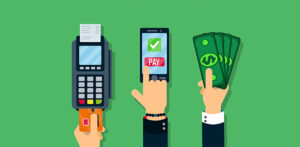The payment revolution.

The tipping point of the revolution occurred in 2003 were the electronic systems surpassed the use of cash and checks in stores. By 2005,its accounted for 55% of in store payment.
Similar trends occur for recurring payments. In 2001, More than 75% were made by paper-based method whereas less than 25% were made electronically. But now, around 50% of recurring bills paid electronically.
Around the whole world, a Credit card plays a major role. In most countries, it is difficult to start a business without supporting credit cards. It is also important to support payments by a verity of e-payment mechanism including banks transfers, COD, electronic checks, private-label cards, gift cards, instant credit, and other non-card payment system.
What factors must be consider?
Hardware/software
Most payment systems require the buyer to install additional hardware, or the seller to use specific software.
Interoperability and portability
An e-payment system must mesh with existing systems and applications. And it must be supported by standard platforms.
Security
The money transfer has to be secure. Usually the risk for the customer must be lower then the risk for the seller.
Anonymity
Some buyers prefer to be anonymous. Cash is anonymous, where the credit card is not. So, special payment methods have to be taken to maintain anonymity.
Transaction fees
For both customers and sellers, Credit cards have high transaction fees (up to 3%).The lower the transaction fees, the better.
International support
E-Commerce is worldwide, so any e-payment method must be easily adopted in different countries.
Regulations
Any new payment system must adhere to a number of national and international law regulations.
